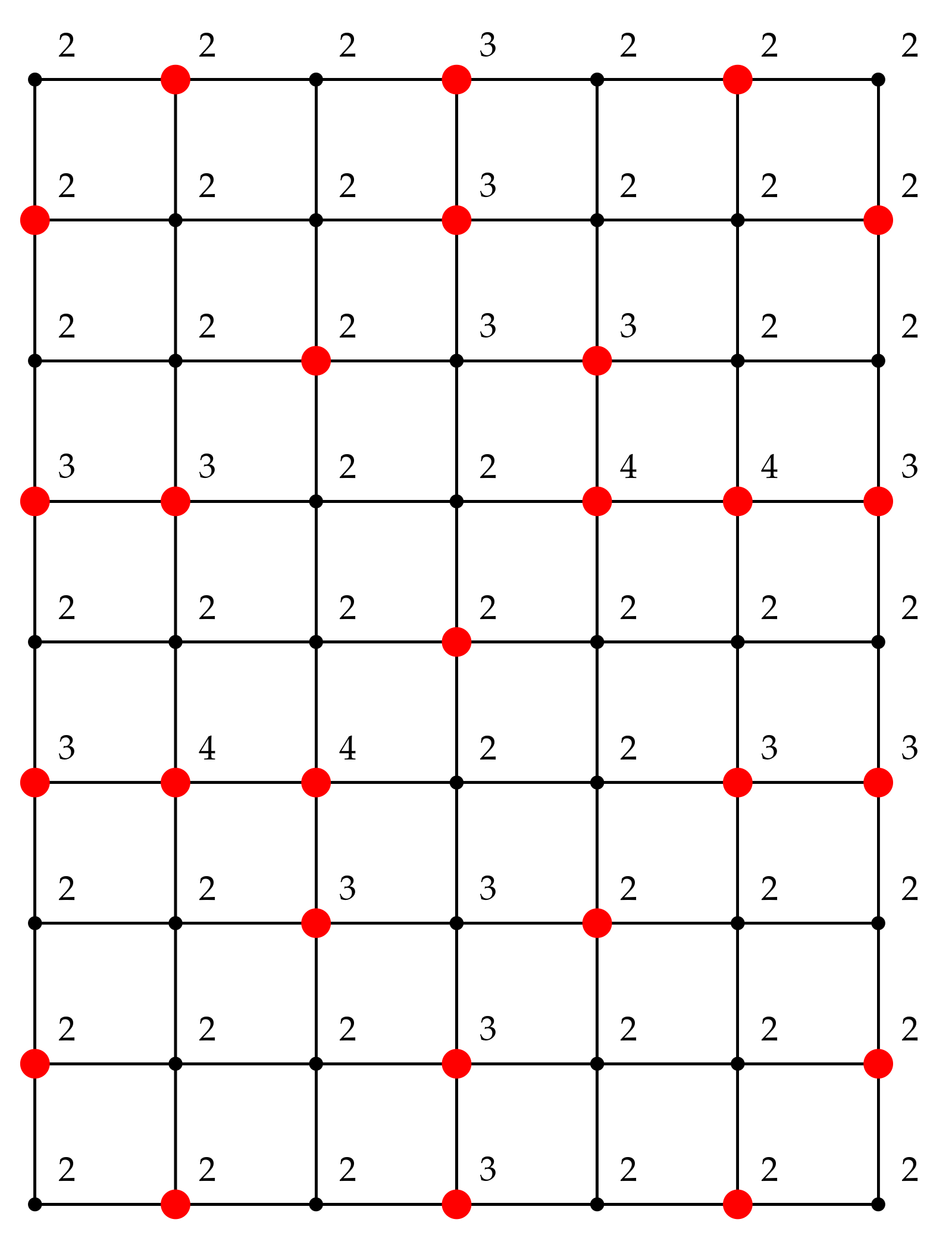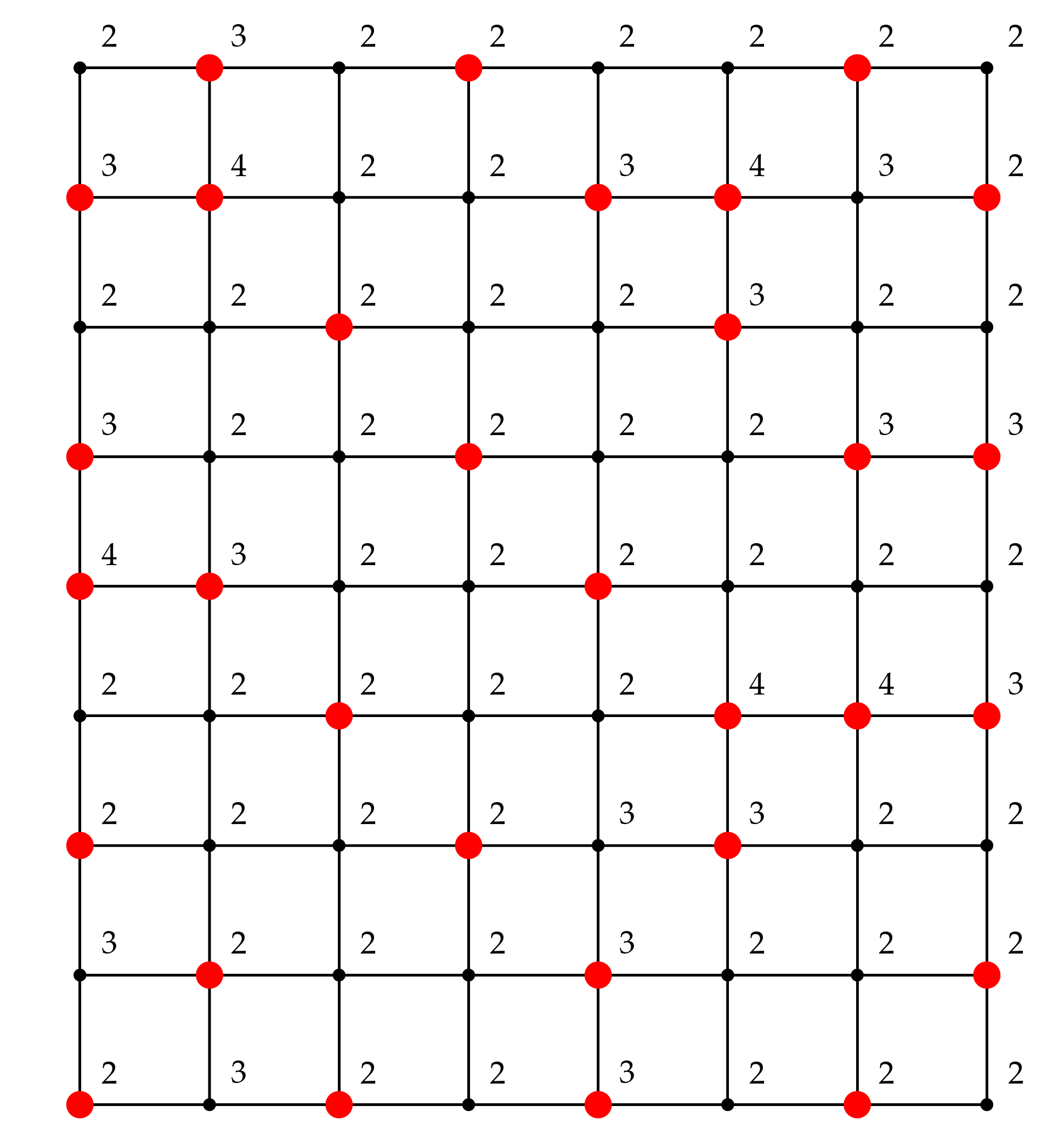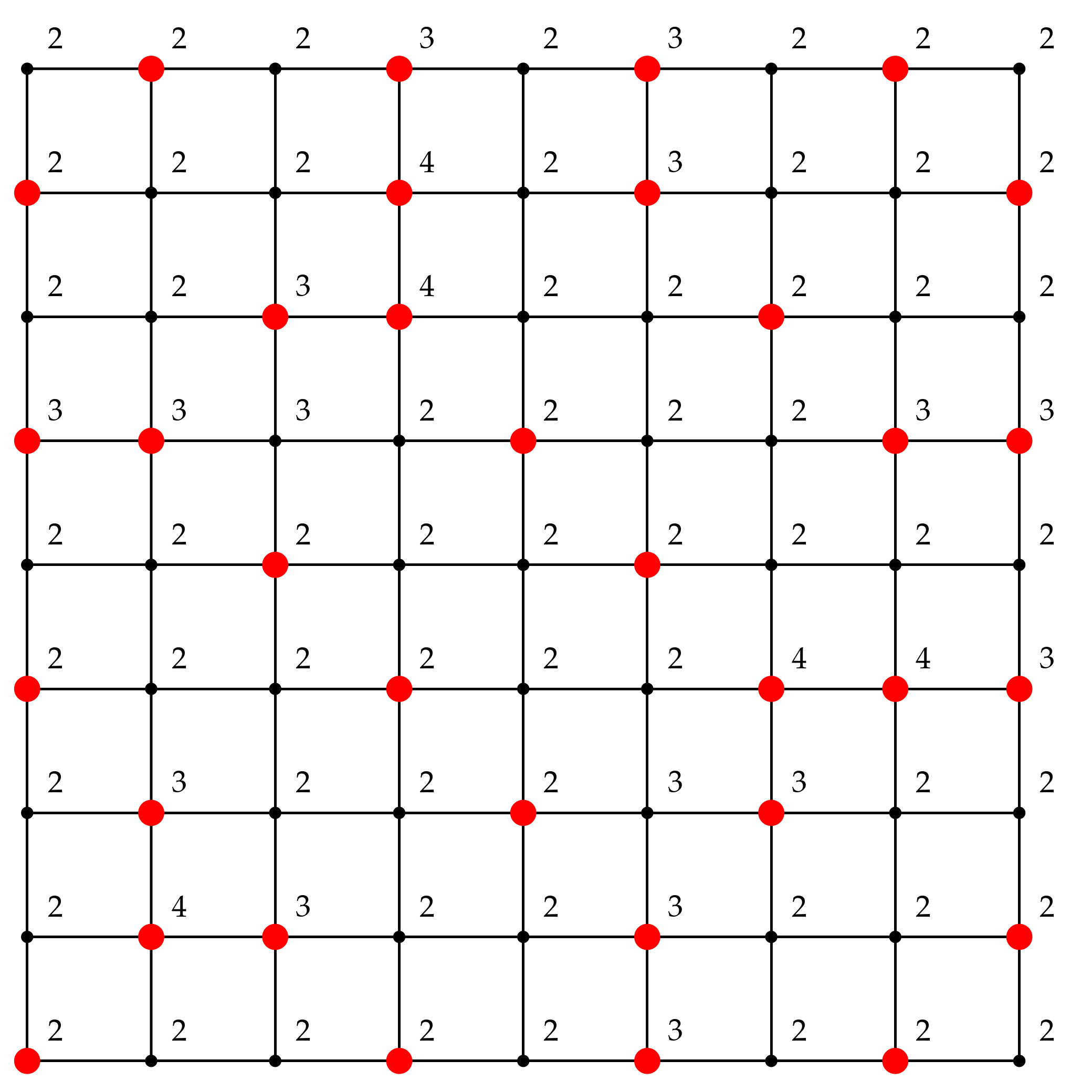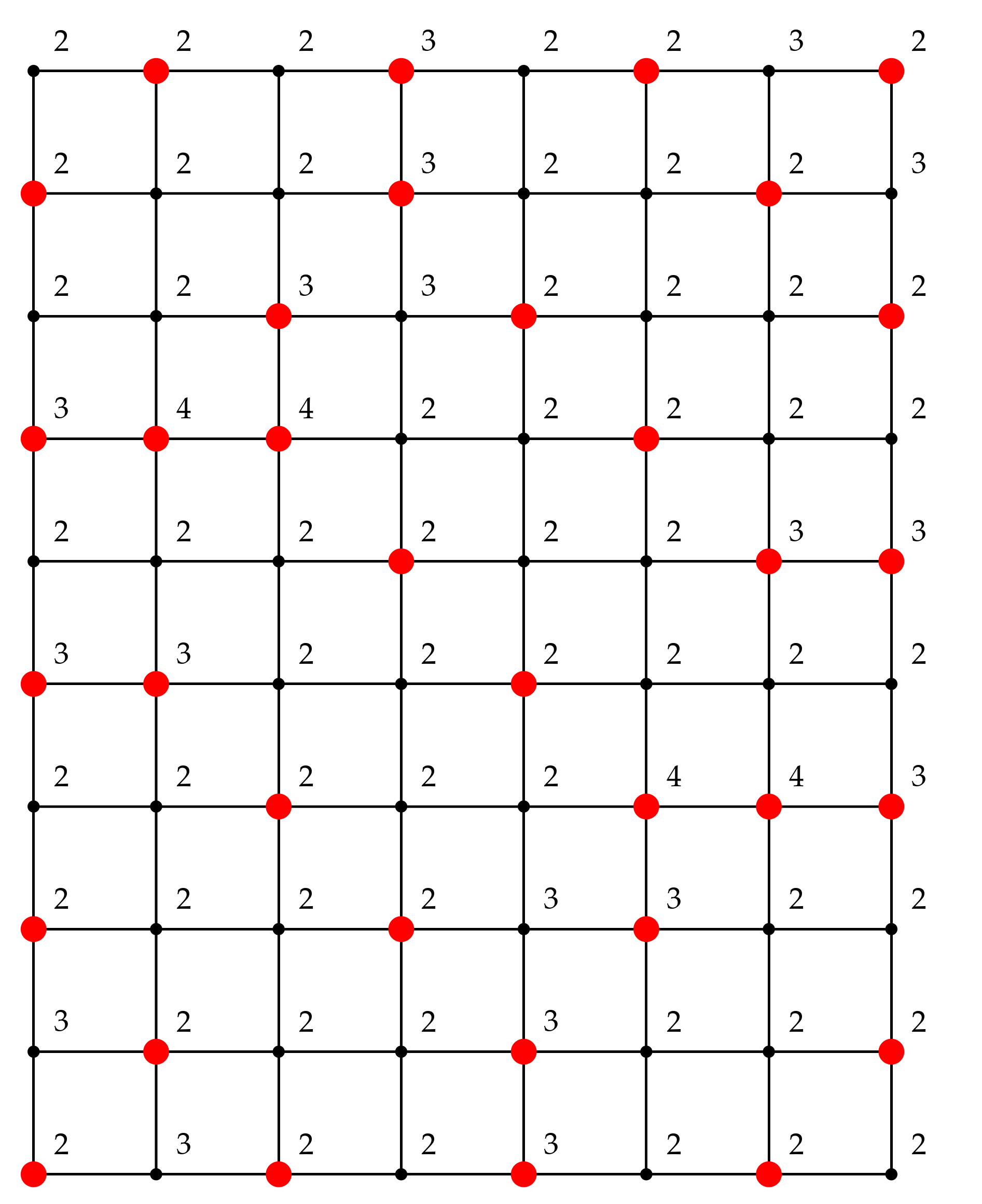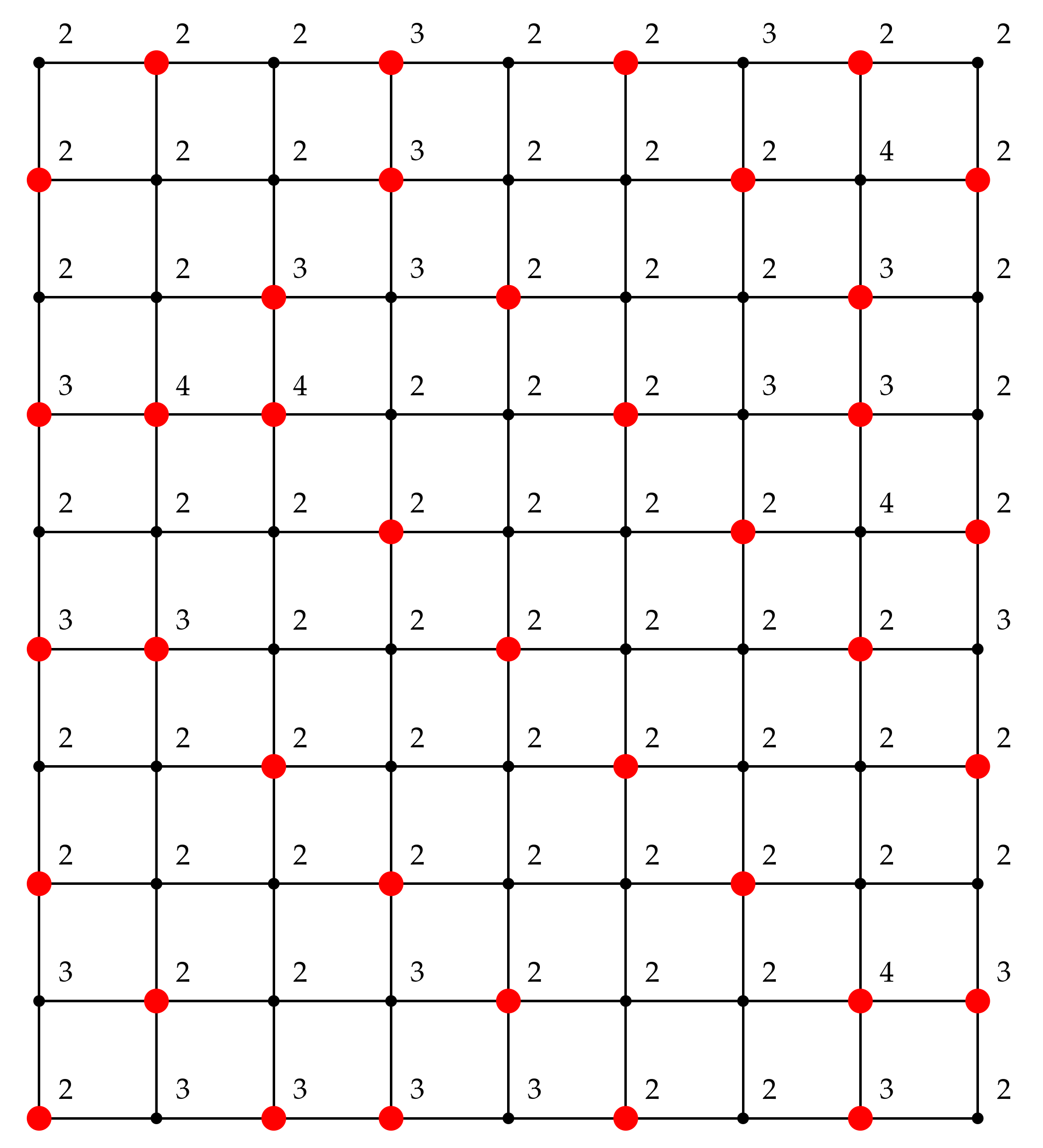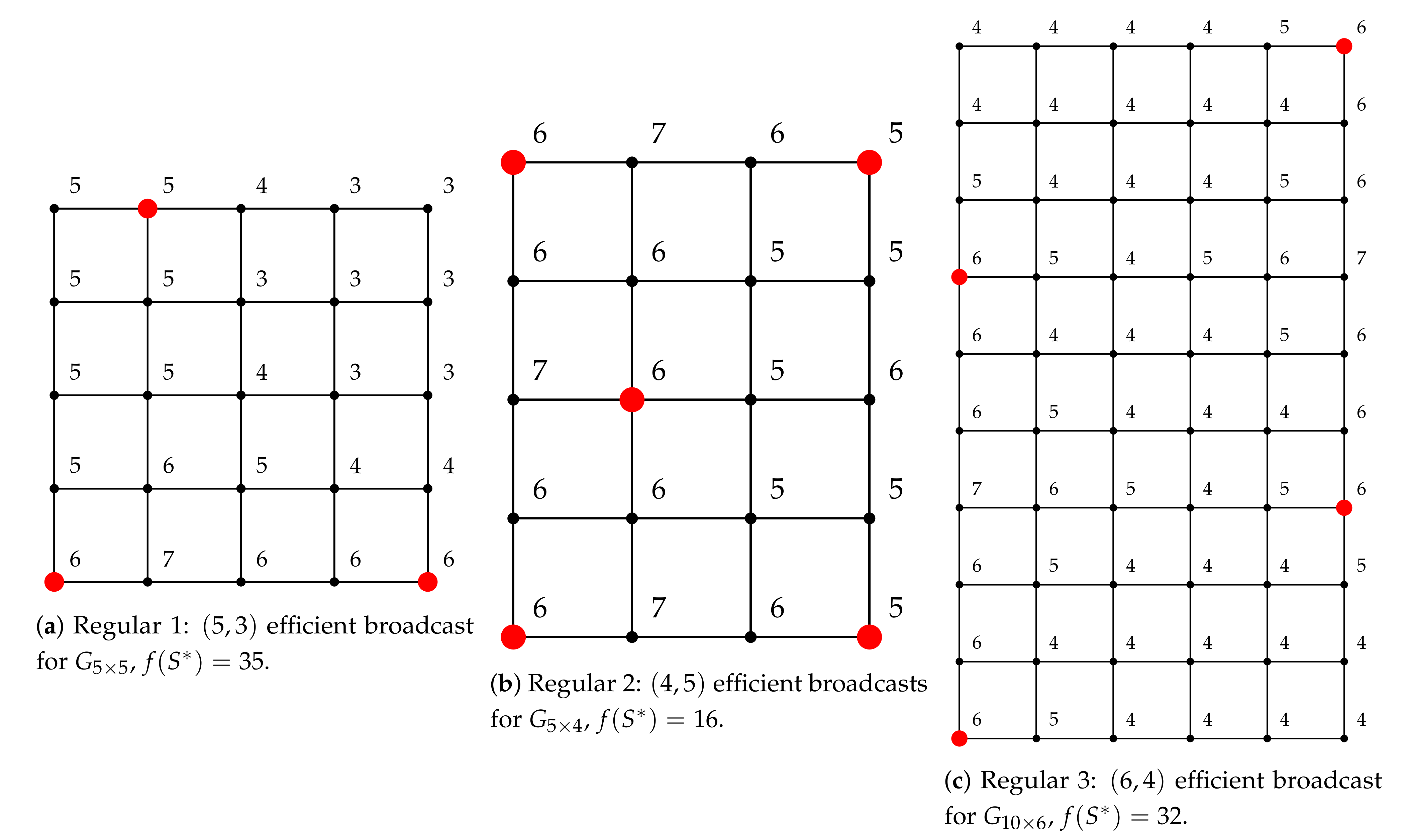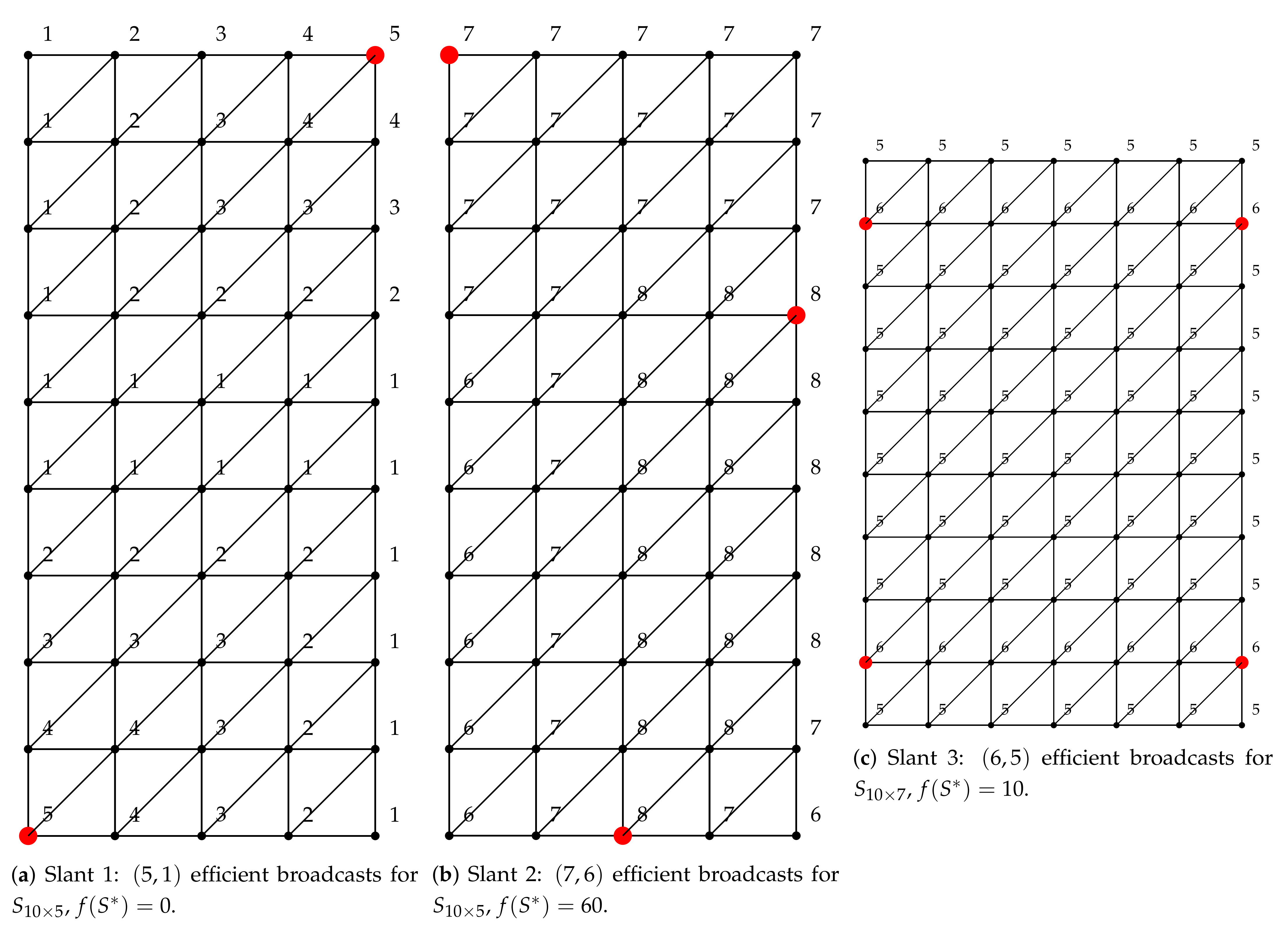In this section, we present the results of our studies on the linear programming problem for the broadcast domination number, followed by results of the efficient broadcast via a genetic algorithm modified for binary encoding.
4.1. Finding a Broadcast Domination Number
To solve the problem of
broadcast domination number as detailed in
Section 2, we define the distance between any two vertices, computed as part of the reception coefficient matrix
in (
3), as the number of edges in a shortest path connecting them.
First, we consider those problems studied in Blessing et al. [
1] where the values of
are fixed to
and
, and only a grid graph of varying sizes
,
are considered. We use the notation
for an
regular grid graph. Note that the results of
broadcast domination numbers in [
1] were obtained by solving a dynamic programming algorithm coded in SAGE.
The compared results of
for
equal to
and
are given in
Table 1 and
Table 2, respectively. The left panel presents the results from Blessing et al. [
1], and the right one illustrates our results obtained by solving the formulated LP model. Since swapping the two numbers
simply means rotating a symmetric grid graph, we only provide results in the lower triangular table. This leads to finding
broadcast domination numbers for 55 different grid-size problems.
Compared to our results, we found inconsistencies in their reporting (6 boldface values in
Table 1, and 2 values in
Table 2). For example, in
Table 1, the
broadcast domination number of
was reported as 25 in [
1], but our results show that using only 24 broadcasting towers is sufficient as illustrated in
Figure 2. The other five domination numbers found by [
1] in
Table 1 are also of higher values than ours. Verification examples, similar to
Figure 2, that our optimal solutions are indeed the domination numbers are given in
Appendix A for all these other cases.
On the other hand, the two boldface numbers in
Table 2 indicate that the domination numbers found by Blessing et al. are smaller than ours. For example, for the
, the
broadcast domination number was reported as 2 in [
1], while our optimal solution from the LP was found to be 3. In this case, we carried out the exhaustive verification to confirm that all
possible configurations with 2 broadcasting towers on 16 vertices fail to be a broadcast dominating set for the
graph. Thus, our optimal solution is actually the broadcast domination number. However, let us note that we could not perform exhaustive verification for the
broadcast domination number of
graph whose value was found to be 10 in [
1], smaller than ours by 1 tower. This is because the size of all possible configurations with 10 broadcasting towers on 100 vertices of the
graph is
exceeding our computational abilities.
As the proposed LP approach is applicable to any graph types, we provide additional results for
broadcast domination numbers on other graph types not considered in [
1], namely, slant and king’s grid graphs. For the sake of convenience, the notations
and
will be used to denote
slant and king’s grid graphs, respectively. Furthermore, since the LP approach is applicable to larger
values than the settings considered in [
1], we shall also vary the
values from 1 to 10. A summary of problems we solved is given in
Table 3.
Here, we present two cases from each graph type:
and
,
and
,
and
. The broadcast domination numbers for these graphs are provided in
Table 4,
Table 5 and
Table 6. Results for other cases can be found in
Appendix B. Note that different from
Table 1 and
Table 2, a number in these tables is a
broadcast domination number for a fixed graph size. A dash symbol (-) in the table indicates an infeasible situation as the reception parameter
r is too large for the given transmission parameter
t. Considering the three graph types of same size:
,
and
, which correspond to panel (a) of each table, we can observe that a king’s grid graph requires fewest number of broadcasting towers followed by slant and grid graphs. This makes intuitive sense because additional diagonal edges allow signals to transmit to more neighbor vertices.
4.2. Locating an Efficient Broadcast
Having found , the minimum size of a broadcast dominating set, we now identify a efficient broadcasting configuration , as defined in Definition 6.
For a computational purpose, we consider an equivalent unconstrained binary optimization problem to the problem in (
5). To that end, we define a binary vector
where each component
corresponds to the vertex
i of the graph
G:
if the vertex
i is selected as a broadcasting tower of transmission
t, and zero otherwise. We subsequently define a relation between a configuration
S which is our decision variable in the original problem, and a binary vector
by
and consider the equivalent problem with a binary vector input
instead. Once the optimal solution
to the latter is found, we can convert the solution back to the optimal configuration
by using the predefined relation in (
6).
To solve the unconstrained binary optimization problem, we apply the genetic algorithm (GA) with a binary input. To speed up the convergence and leverage the available information, we supply an optimal configuration, a solution of the LP problem in (
1)–(
3) (which is guaranteed to be in
), to the initial population of the GA algorithm. The GA parameters which are the population size and the maximum number of iterations are set to 1000 and 3000, respectively. The algorithm stops when the optimal solution (efficient broadcasting configuration) is found. To determine the sufficiently large penalty
used in (
5), recall that our goal is to minimize the wasted signals. We thus consider the worst-case scenario, i.e., when all vertices are used as broadcasting towers, and set
M as the resulting wasted signals.
We demonstrate our approach on three problems for each graph type, resulting in 9 problems in total. The details of these problems are presented in
Table 7. Columns 2–3 of the table give specific parameter values of the graph size
, the transmission
t, and the required reception strength
r. Column 4 corresponds to the broadcast domination number which was found by solving the LP problem in
Section 4.1.
Each experiment is repeated for 20 replications with different initial population. Examples of an optimal configuration of the efficient broadcast found by solving minimization problem in (
5) with the stated values of
M for the regular, slant and king’s grid graphs are illustrated in
Figure 3,
Figure 4 and
Figure 5. The caption below each sub-figure provides also the optimal objective function value
. Note that it is possible to have multiple optimal configurations with the same objective function value.
To validate our obtained results, we carried out a computationally expensive exhaustive search to get an efficient broadcasting configuration
, and calculate the value of
according to (
5). Numerical results revealed that the GA algorithm could attain the same minimum value of
for all problems, implying that the proposed approach could efficiently locate the exact efficient broadcast.
